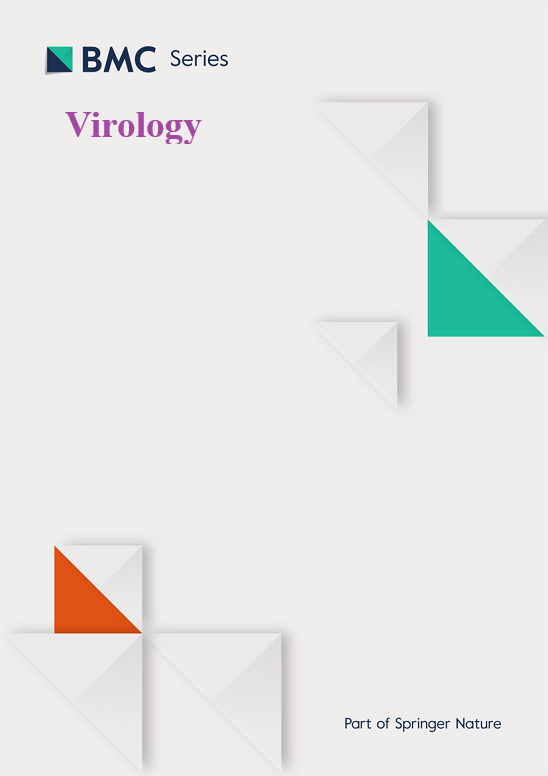Recent SARS-CoV-2 evolution trajectories indicate the emergence of Omicron's several subvariants and the current rise of KP.3.1.1 and XEC
IF 2.8
3区 医学
Q3 VIROLOGY
引用次数: 0
Abstract
The recent COVID-19 pandemic is one of the quickest-evolving pandemics in the world history. Therefore, the evolution of SARS-CoV-2 needs to be tracked consistently. Various VOIs, VOCs, and recent subvariants of Omicron have emerged from the dynamically evolving SARS-CoV-2. Various offspring of the Omicron subvariants have emerged since its origin, including lineages such as BA, BQ, and XBB, as well as more recent subvariants like BA.2.86, JN.1, JN.11.1, KP.3, KP.3.1.1, and XEC. The study evaluated the overall and one year evolutionary patterns, genome diversity, divergence event, transmission and geographical distributions, circulating frequency, entropy diversity, mutational diversity, risk mutations in S-protein and mutational fitness of the subvariants. The study estimated the substitution rate of all variants and subvariants of SARS-CoV-2 since its origin (32.001 × 10-4 subs/year). The geographical distributions of the recent KP.3.1.1 and XEC subvariant indicated its distribution in North America, South America, Europe, and Southeast Asia. Simultaneously, genome mutational landscapes were noted, including Spike and RBD mutations. We found that JN.1, JN.1.11.1, KP.3, KP.3.1.1 and XEC subvariants have gained the highest mutational fitness in Europe and North America. Our study indicates that the rapid evolution and highest frequency of mutational fitness have created a variety of subvariants from Omicron. It also indicates a shift from waves to mini-waves. Finally, our possible explanation is that mutation-driven divergent evolution contributes to the emergence of recent subvariants.
最近的SARS-CoV-2进化轨迹表明,Omicron的几个亚变体出现了,目前KP.3.1.1和XEC的上升
最近的2019冠状病毒病大流行是世界历史上发展最快的大流行之一。因此,需要持续跟踪SARS-CoV-2的演变。从动态演变的SARS-CoV-2中出现了各种voi、VOCs和最近的Omicron亚变体。欧米克隆亚变体的各种后代自其起源以来已经出现,包括BA, BQ和XBB等谱系,以及最近的亚变体,如BA.2.86, JN.1, JN.11.1, KP.3, KP.3.1.1和XEC。该研究评估了亚变体的总体和一年进化模式、基因组多样性、分化事件、传播和地理分布、循环频率、熵多样性、突变多样性、s蛋白风险突变和突变适应度。该研究估计了SARS-CoV-2自起源以来所有变体和亚变体的替代率(32.001 × 10-4 subs/年)。最近的KP.3.1.1和XEC亚变种的地理分布表明其分布在北美、南美、欧洲和东南亚。同时,基因组突变景观被注意到,包括Spike和RBD突变。我们发现,在欧洲和北美,JN.1、JN.1.11.1、KP.3、KP.3.1.1和XEC亚变获得了最高的突变适应度。我们的研究表明,快速的进化和最高频率的突变适应度产生了多种来自Omicron的亚变体。这也表明从波浪到迷你波浪的转变。最后,我们可能的解释是,突变驱动的分化进化有助于最近亚变体的出现。
本文章由计算机程序翻译,如有差异,请以英文原文为准。
求助全文
约1分钟内获得全文
求助全文
来源期刊

Virology
医学-病毒学
CiteScore
6.00
自引率
0.00%
发文量
157
审稿时长
50 days
期刊介绍:
Launched in 1955, Virology is a broad and inclusive journal that welcomes submissions on all aspects of virology including plant, animal, microbial and human viruses. The journal publishes basic research as well as pre-clinical and clinical studies of vaccines, anti-viral drugs and their development, anti-viral therapies, and computational studies of virus infections. Any submission that is of broad interest to the community of virologists/vaccinologists and reporting scientifically accurate and valuable research will be considered for publication, including negative findings and multidisciplinary work.Virology is open to reviews, research manuscripts, short communication, registered reports as well as follow-up manuscripts.
 求助内容:
求助内容: 应助结果提醒方式:
应助结果提醒方式:


